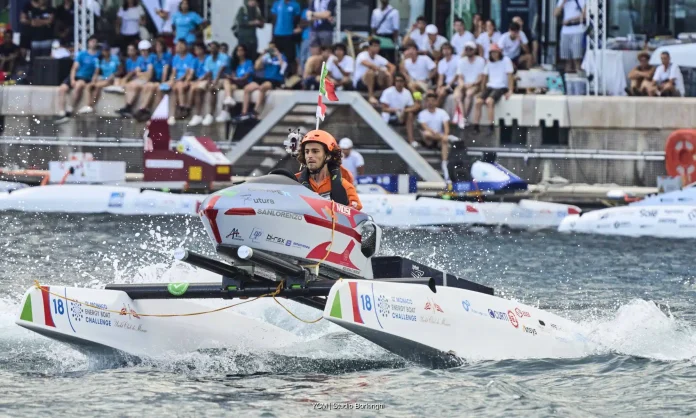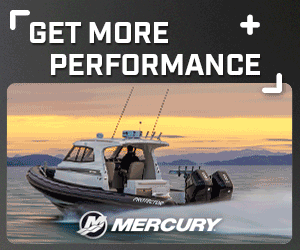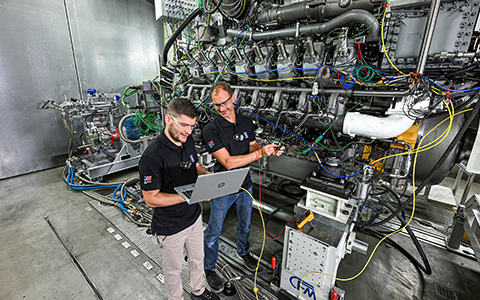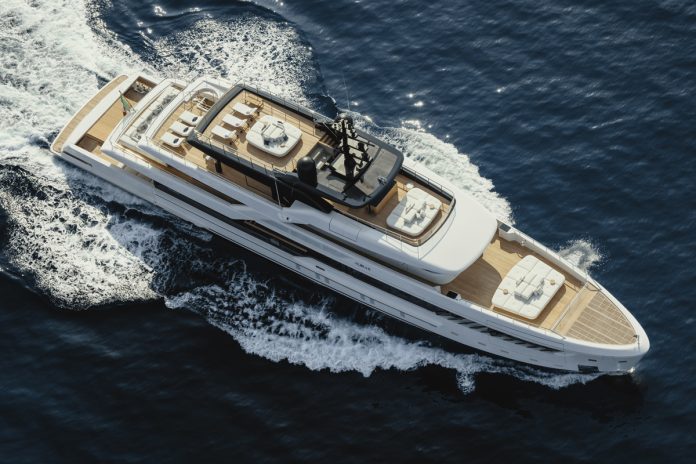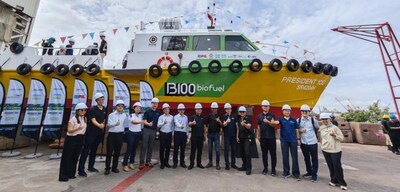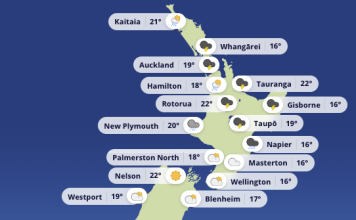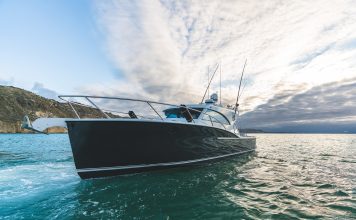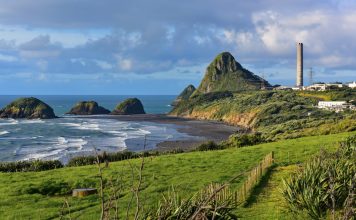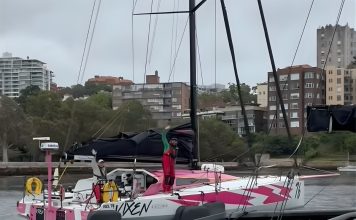Earlier this month (1–5 July), the Monaco Energy Boat Challenge returned to the docks and waters of the Yacht Club de Monaco, once again setting the benchmark for what sustainable innovation in marine propulsion can look like. The event attracted 42 teams from 20 countries, drawing over 1,000 engineering and naval architecture students from 29 universities. With support from the Prince Albert II Foundation, UBS, BMW, and SBM Offshore, this was more than a student regatta. It was a full-scale technology incubator with one clear message: the time for talk is over—now is the moment to act.
Engineering the future of boating: Monaco Energy Boat Challenge 2025
His Serene Highness Prince Albert II made the rounds in the paddock, speaking with teams and inspecting the cutting-edge vessels being readied for the final heats. The atmosphere was electric, but also determined. With every iteration of this event, the technical maturity of the boats—and the urgency of their mission—becomes more apparent.
A four-class testing ground
The Monaco Energy Boat Challenge is divided into four competition classes. The Energy Class, now the largest, features standardised catamaran hulls, with teams tasked with developing the most efficient propulsion and energy systems possible. In the SeaLab Class, experimental concepts are encouraged—this year with a clear emphasis on hydrogen fuel cells, solid and liquid storage systems, and AI-assisted control systems. The Open Sea Class is designed for CE-certified vessels capable of carrying three or more passengers over longer distances. These boats represent technologies on the cusp of commercial viability and are tested in a 21-nautical-mile rally between Monaco and Ventimiglia. New for 2025 was the AI Class, where fully autonomous boats undertook missions entirely on their own, guided by onboard artificial intelligence and advanced sensor arrays.
Each class underwent rigorous on-water testing. Races included endurance trials, slalom courses, speed records, manoeuvrability tasks, and autonomous navigation missions. While performance still counted, the true emphasis was on the viability of the systems and their adaptability to real-world marine conditions.
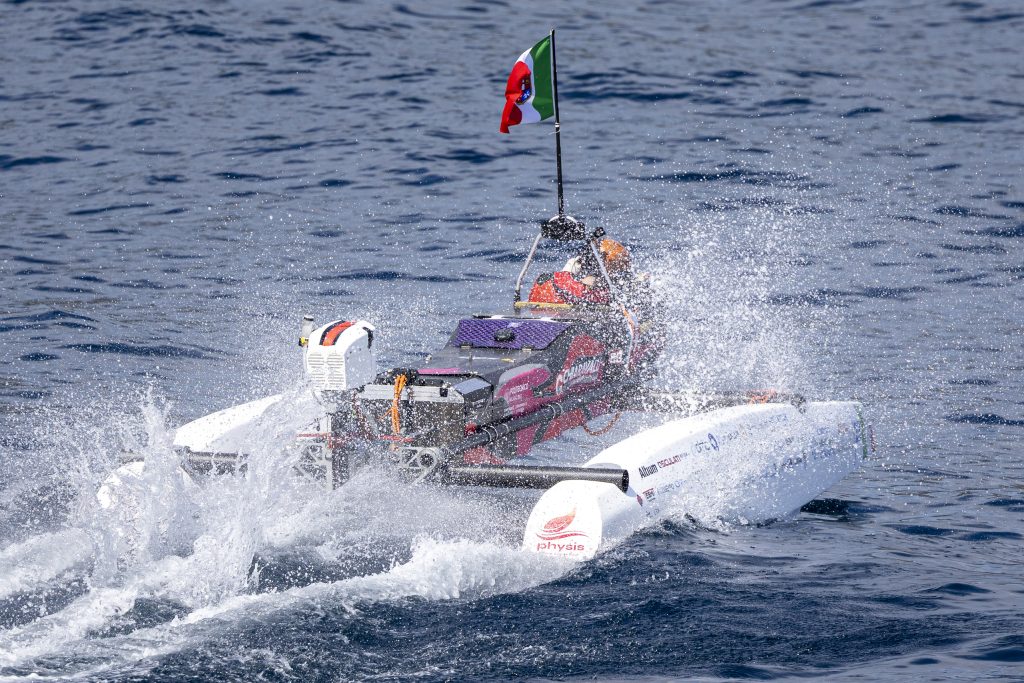
Winners, records, and technological milestones
Italy’s UniBoAT team from the University of Bologna swept the field, winning not only the Energy Class but also the overall championship. Their dominance was underpinned by a meticulously engineered vessel featuring a counter-rotating electric drive system, a high-performance battery, custom-designed transmission components, and a lightweight, hydrodynamic hull. They also took out the Design and Innovation Prizes, capping off a campaign that blended mechanical elegance with raw performance.
Speed records tumbled across multiple classes. Frauscher Boats set a new Open Sea benchmark of 49.84 knots. In the SeaLab Class, Inocel recorded a 16-nautical mile run in just over 30 minutes. UniBoAT also set a new Energy Class speed mark of 26.63 knots, a full 28% faster than the class leader from 2024.
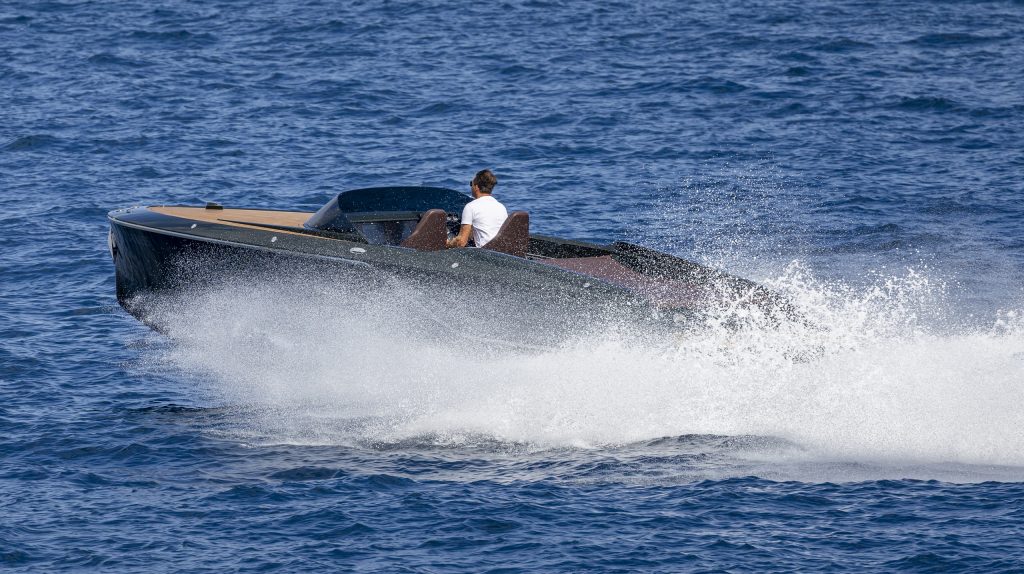
Meanwhile, Antwerp’s Solar Boat Team won the AI Class with a fully autonomous electric vessel, while France’s Red Wave—another Bologna-based project—won the SeaLab Class. The Communication Prize went to Team Sea Sakthi of India, while the Jury’s Coup de Coeur was awarded to Spain’s DHAMMA BLUE.
Defining the future: hydrogen, methanol, and dual-fuel power
Hydrogen continues to be a dominant theme. Twelve hydrogen-powered boats took part, representing a range of approaches: fuel cells, internal combustion conversions, and solid-state hydrogen storage. INOCEL’s hydrogen-powered 8-metre boat was a standout, offering a top speed of 90km/h using a 490hp fuel cell system that weighs no more than a conventional combustion engine and delivers nearly the same range.
Liquid and solid-state hydrogen storage were both on display. The TU Delft team demonstrated a foiling boat using cryogenic liquid hydrogen, while PlusZero from Scotland showcased hand-portable solid-state hydrogen packs that are safer and denser than lithium batteries. These storage technologies are no longer theoretical. Chart Industries, Linde Gas Maritime, and Forvia all highlighted working solutions now entering the market.
Methanol also made a strong case, particularly for the superyacht segment. Its advantages—energy density, existing logistics, and compatibility with both combustion and reforming processes—make it a front-runner for vessels over 50 metres. Builders such as Sanlorenzo and Lürssen are already integrating methanol into dual-fuel systems or hospitality-focused fuel cells.
Dual-fuel engines were explored in depth. Dumarey, Wärtsilä, and Rolls-Royce all presented engines capable of switching between diesel and hydrogen or methanol. These systems offer flexibility during the transition period when infrastructure remains patchy. They also provide retrofit opportunities for yachts that may not yet be ready to switch completely to clean fuels.
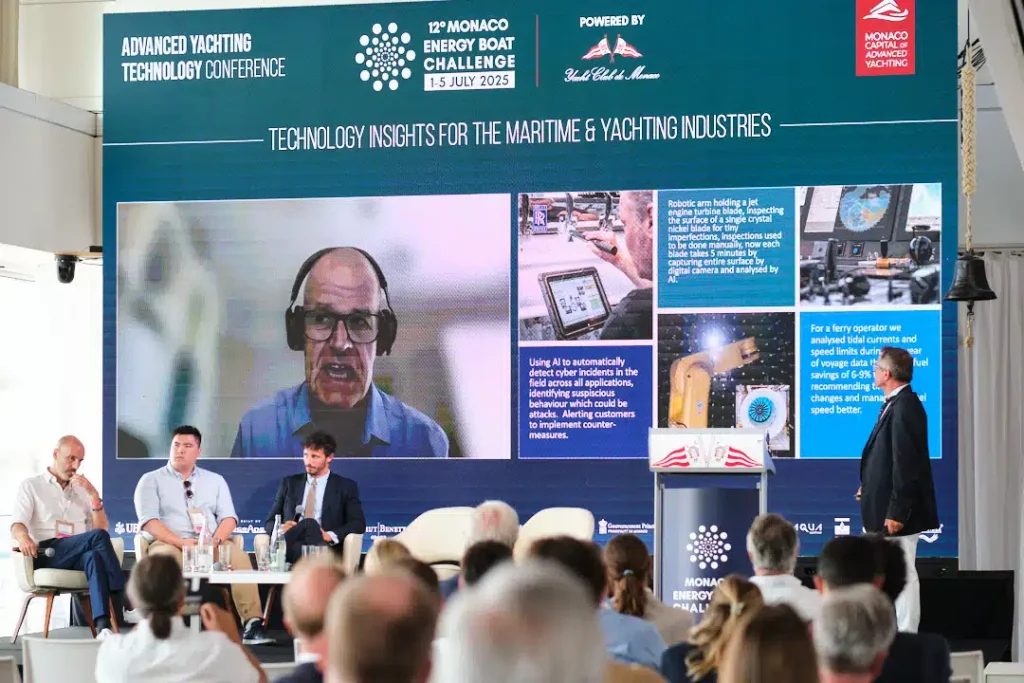
The rise of the toroidal propeller
Among the most visible hardware trends was the adoption of toroidal propellers by more than half the competing teams. These donut-shaped propellers eliminate sharp blade tips, resulting in more continuous water flow, reduced cavitation, and quieter operation. Originally developed for drone use, they have now been adapted for marine applications where underwater noise poses a threat to marine life. Tests at Monaco showed noise reductions of up to 80% compared to traditional marine props—an innovation with ecological benefits that extend far beyond performance.
Cybersecurity, noise pollution, and systemic change
The Advanced Yachting Technology Conference delved deep into the non-mechanical challenges facing the industry. Underwater noise pollution was a dominant theme. Quiet Oceans presented its SMART URN buoy, now in use in Genoa, Fos-sur-Mer, and soon in the North Sea. The SEA Index® and Bureau Veritas unveiled plans for a voluntary underwater noise rating system for yachts over 24 metres, complementing their existing CO₂ metrics.
Cybersecurity was also front and centre. EY’s Maritime Cybersecurity Hub reported that most modern yachts host dozens of processors and networks. Intrusions via crew smartphones or entertainment systems pose serious risks to navigation and control systems. The key recommendation was strict digital separation between passenger and operational networks, enforced from the design stage.
Carbon capture technologies, meanwhile, remain under development. Langh Tech presented a soda ash system that reacts with onboard CO₂ to create a usable by-product. Although still better suited to short journeys and port-based operations, this tech is one of several transitional solutions designed to ease the shift from fossil fuels to renewables.
Syrocco presented a digital twin and route optimisation tool that uses real-time weather and operational data to cut fuel use by up to 25%, while the European Space Agency explained how satellites can support decarbonisation through emissions tracking and port automation—an industry-spanning crossover that’s now entering operational stages.
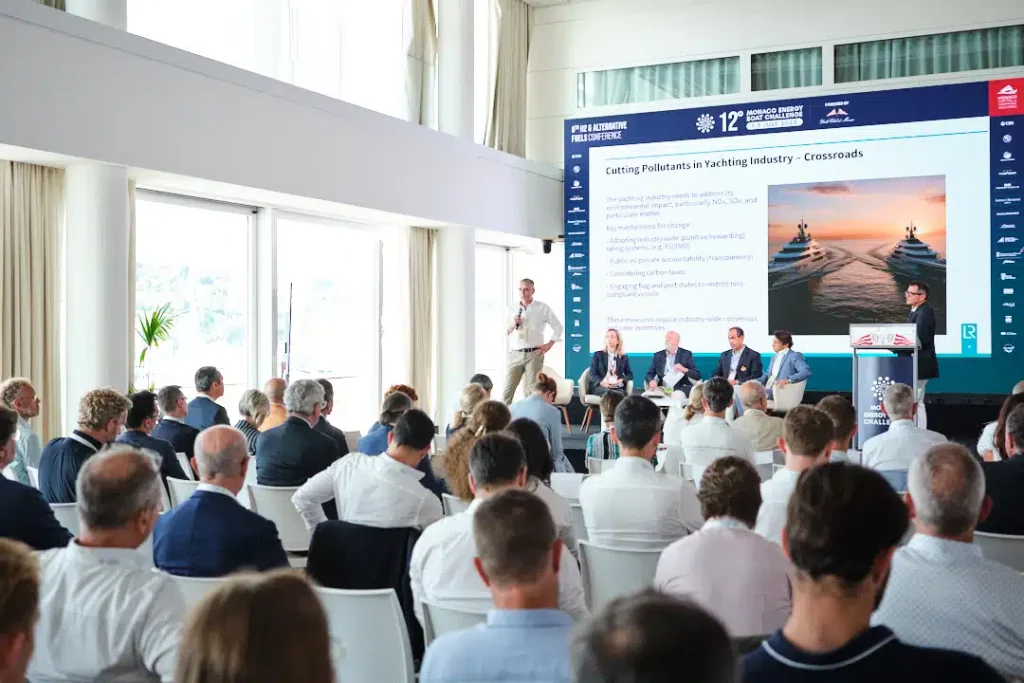
Refuelling realities
Much discussion at the Hydrogen & Alternative Fuels Conference focused on infrastructure. Without refuelling stations, hydrogen boats can’t operate commercially. In response, NatPower H announced that 40 Italian marinas have already signed on to host hydrogen stations. In Marseille, Ephyra has already launched a working boat-and-station ecosystem, while Linde has built more than 200 hydrogen refuelling points globally.
Yet the economics remain challenging. In Europe, green hydrogen can cost four to five times more than grey hydrogen. As one speaker noted, the technical hurdles have been largely solved—it’s the economics and regulations that must now catch up.
Energy Observer: Floating laboratory, real-world impact
The Energy Observer catamaran, a hydrogen-powered vessel that has logged more than 68,000 nautical miles since 2017, served as both an exhibit and a classroom. Powered by solar, hydrogen, and hydro systems—including onboard electrolysis—it offered students hands-on exposure to scalable, proven systems. Energy Observer 2 is in development as a liquid hydrogen-powered cargo vessel, while Energy Observer 3 will experiment with ammonia as both a fuel and hydrogen carrier. These projects are backed by €40 million in European funding and represent the bridge from prototype to production.
Education meets industry
Behind the racing and engineering was a human story of mentorship and career-building. The Corporate Mentoring Programme saw major shipbuilders like Sanlorenzo and Azimut|Benetti offer technical support, facilities access, and career guidance to student teams. The Job Forum held during the event resulted in 90 internships and employment interviews—a clear sign that the Monaco Energy Boat Challenge is not just about innovation, but about shaping the next generation of marine professionals.
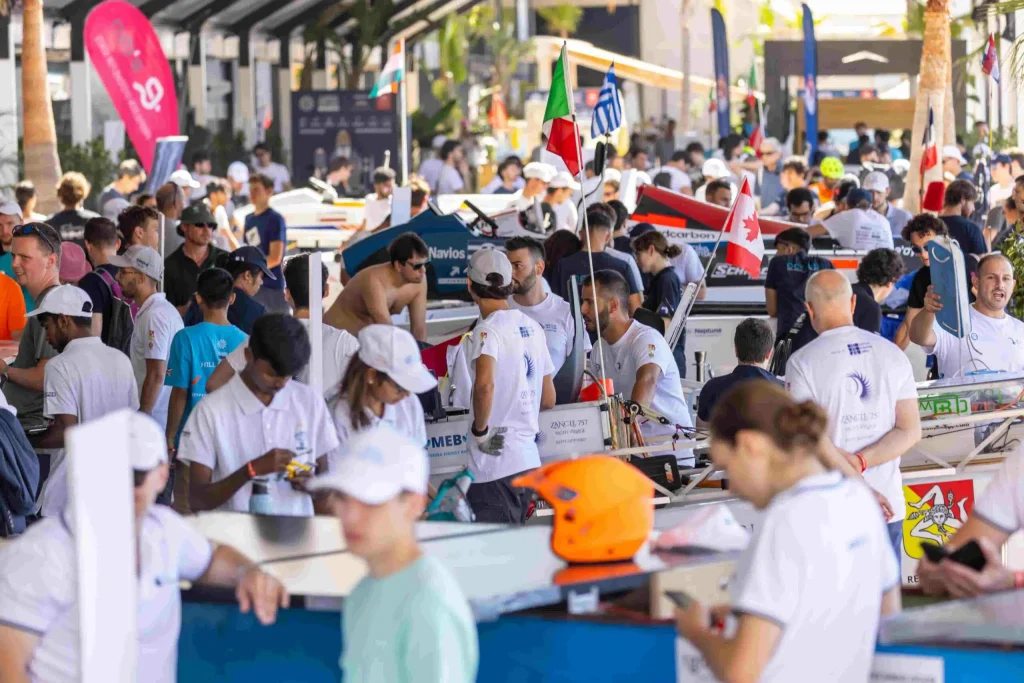
A global platform for change
With every iteration, the Monaco Energy Boat Challenge becomes more than a regatta. It is now a testbed for regulation, a forum for policy, and a launchpad for commercial technologies. The event’s organisers speak often of transition, but what Monaco 2025 revealed was that the future of yachting is already taking shape—one quiet, clean, and intelligently designed vessel at a time.








